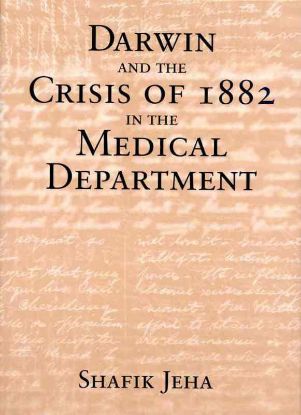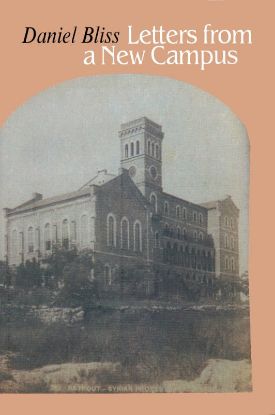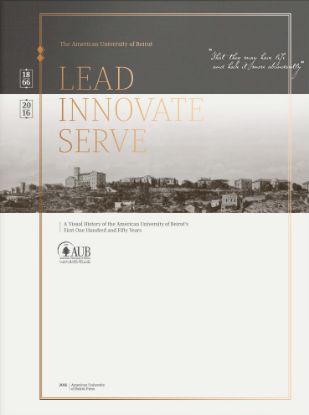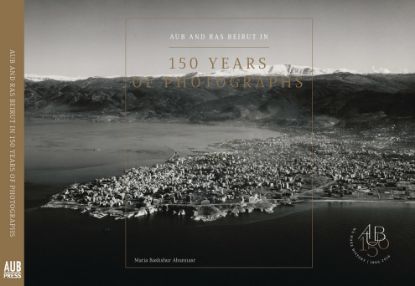Filter by price
Products tagged with 'syrian protestant college'
Darwin and the Crisis of 1882 in the Medical Department
This is the story of the Lewis Affair at the American University of Beirut (then the Syrian Protestant College). When Professor Edwin Lewis mentioned Charles Darwin in the course of a commencement address, there were drastic ramifications, including faculty resignations, student suspensions, the first student protest in the Arab World, a subsequent drop in student enrollment, and the imposition of a Declaration of Principles on AUB faculty members. It represents a momentous event in the history of the American University of Beirut, and its reverberations were felt in intellectual circles throughout the Arab world. A foreword by former AUB president John Waterbury outlines how the issues underlying the Lewis Affair, including the controversy generated by Charles Darwin's theory of evolution, the struggle between conservative and liberal elements of academia, and the question of academic freedom, remain pertinent to this day.
$25.00
Letters from a New Campus
In May 1873, Mrs. Abby Bliss and her four children left Beirut and returned to Amherst, Massachusetts for reasons of health and the children's education. This book contains letters written to them between 1873 and 1874 by Abby's husband, Daniel Bliss, the first president of the Syrian Protestant College, later the American University of Beirut. Written in diary form just seven years after the founding of the College, the letters reveal the excitement of the almost completed construction of College Hall, the frustrations and achievements of their fourteen months of separation, and fascinating information about daily life and the politics of the time. They show Daniel Bliss as a loving family man missing his wife and children while enthusiastically dedicated to the task of building the College.
$20.00
The Founding Fathers of the American University of Beirut
AUB's 125th anniversary celebrations in 1992 coincided with the beginnings of Lebanon's return to peace after sixteen years of civil war, throughout which AUB continued to function. This book is a special anniversary tribute to the founders of the university, originally the Syrian Protestant College, who laid the foundations on which the college could grow and develop into one of the leading institutions of higher education in the Middle East. The book documents seven of the original faculty: Daniel Bliss, the first president; David Stuart Dodge; Edwin R. Lewis; Harvey Porter; George E. Post; Cornelius Van Dyck; and John Wortabet. Sections in English and Arabic include speeches, official papers, letters, and articles – some contemporary, others more recent – that demonstrate the values and principles these founding fathers sought to put into practice.
$20.00
Lead, Innovate, Serve
Lead, Innovate, Serve: A Visual History of the American University of Beirut’s First One Hundred and Fifty Years represents a collaborative expression of love for AUB in celebration of its 150th anniversary. This elegant collection of images effectively walks the reader, year by year, through a selection of key elements and moments in the University’s history. The photographs are organized chronologically into five sections entitled “Founding 1862–1901,” “Taking Root 1902–1948,” “Academic Renaissance 1949–1970,” “Turmoil and Resilience 1971–1996,” and “A New Millennium 1997–2016.” The sections are accompanied by short essays relating to each period of the University’s history and by profiles of AUB’s presidents and numerous history makers who have contributed to the impact that the American University of Beirut has had both in Lebanon and beyond. We believe that Lead, Innovate, Serve will be treasured by all who have entered the gates of the University. Proceeds from sales of the book go to the 150 for 150 Scholarship Fund.
$60.00
One Hundred and Fifty
Founded in 1866, the American University of Beirut (AUB) has had a positive and transformative impact on Lebanon, the Middle East, and the world. Published on the occasion of AUB's 150th anniversary, this commemorative volume serves as a lasting testimony to the extraordinary influence of AUB in its first 150 years and sets the stage for its future. This volume examines AUB's history from diverse perspectives and points of view. It deals with key moments in the early history of the University, and with its current position as a local agent with global concerns, also focusing on its complex relations with the USA and the rest of the world. Some of the chapters highlight salient personalities and important constituencies who have contributed to the legacy of AUB. Parts of the book also focus on the campus and its location within Ras Beirut, as well as their resulting interaction and mutual impact over years of growth and transformation. The book is organized according to five themes: Early History, AUB, the USA, and the World, Space, Academic/Scientific Contributions, and Salient Personalities
$40.00
AUB and Ras Beirut in One Hundred and Fifty Years of Photographs
AUB and Ras Beirut in 150 Years of Photographs began as a photographic exhibition organized by AUB's Neighborhood Initiative and Jafet Library in celebration of the university's 150th anniversary. The images, capturing so many of the changing faces of the university and its neighborhood, were drawn from a wide range of sources including both private and public collections, and various institutional archives. Two years on, this book represents an extended appreciation of the connections and the relationship between the American University of Beirut and its community over the past 150 years. The photographs reflect a diverse mix of people and place, focusing on views of Ras Beirut running along the sea-front from Raouche to Jal-al-Bahr and along the Corniche to Manara and 'Ayn al-Mreisseh. It also follows Bliss and Hamra streets, and includes views of the American University of Beirut campus as it has evolved through the years. The book's preface outlines the process through which the photographs are arranged as well as the book's evolution from the original exhibit. AUB and Ras Beirut in 150 Years of Photographs represents a beautiful documentation of the changing face of the neighborhood and its evolution over time.
$50.00
- 1
- 2






